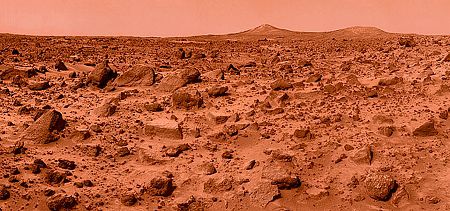A POSSIBLE LIFE ON THE RED PLANET |
|
Astrobiologist Jennifer Eigenbrode of the US Space Agency's Goddard Center said, "This is a significant step forward as it indicates that organic matter is being preserved in the harshest environments of Mars," adding, "Curiosity has showed that the crater Gale was habitable about 3.5 billion years ago, with conditions comparable to those of the Earth in formation, where life evolved at this time ". |
|
|
Amazing organic molecules have been discovered by the Curiosity rover in sedimentary rocks dating back about 3.5 billion years. These rocks have been deposited in a lake considered one of the most difficult areas of Mars at a time when life could flourish. The researchers also know a little more about the atmosphere of Mars with the discovery of traces of methane. Curiosity seems to have also confirmed the presence of seasonal variations of methane in the Martian atmosphere. But this gas, often a sign of the presence of life, comes from the planet itself and could be contained in ice sheets below the surface. If this is a step forward in the search for life on the red planet, it does not yet suggest the discovery of life on this planet. Indeed samples of organic matter may have an abiotic origin, come from geological formations similar to coal, or a meteorite. In 2014, organic matter in small quantities had already been found by Curiosity. If that does not mean that life is present, according to Sanjeev Gupta, professor of SVT at Imperial College London (UK) and co-author of the study, "organic compounds are the building blocks of life ". These two discoveries however evoke the potential life existing or passed on the Red Planet. These types of molecules turn out to be constitutive elements to the appearance of life. And there are two possibilities concerning their origin: either it is an exclusively physical process, or these molecules mean that there has been a life on Mars in the past. Organic molecules and a potential life on Mars? Knowing that these organic molecules appeared at the same time as liquid water on Mars and that these two elements together triggered life on Earth, the second possibility is quite probable. Added to this is the presence of methane, another potential indicator of life on Mars. Indeed, it is the seasonal variability of this methane that intrigues scientists, especially as a peak occurs in the summer. For our Earth, this phenomenon is associated with a biological process. But is it the same for Mars? No one knows for now ... Methane and organic molecules could be biosignatures of life forms but their origins could also be abiotic. Let's hope that NASA's Rovers March 2020 and ESA's ExoMars 2020 will land on the red planet to elucidate this intriguing new find. |
|
| Paul Emison for DayNewsWorld | |
 |
|





